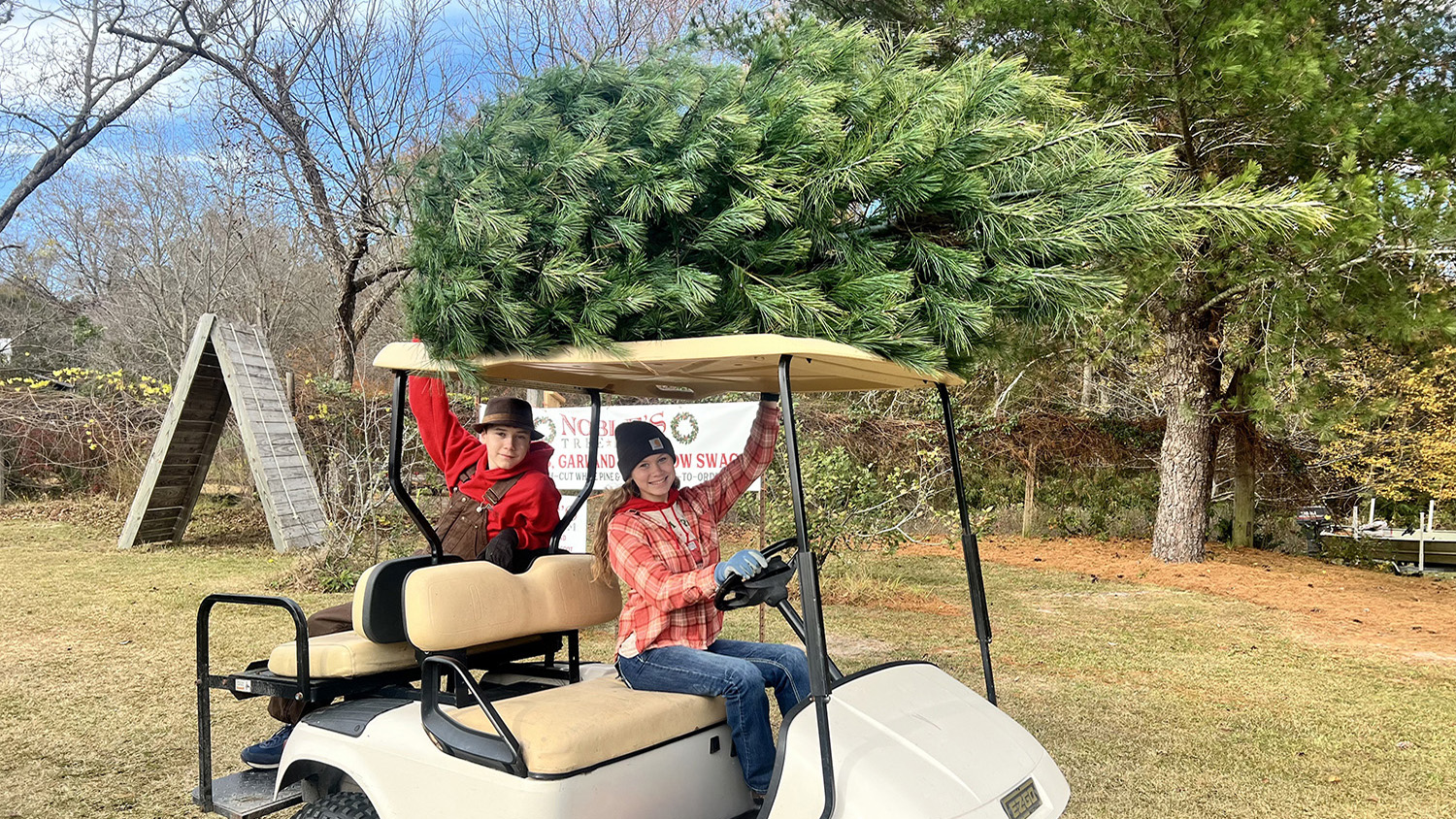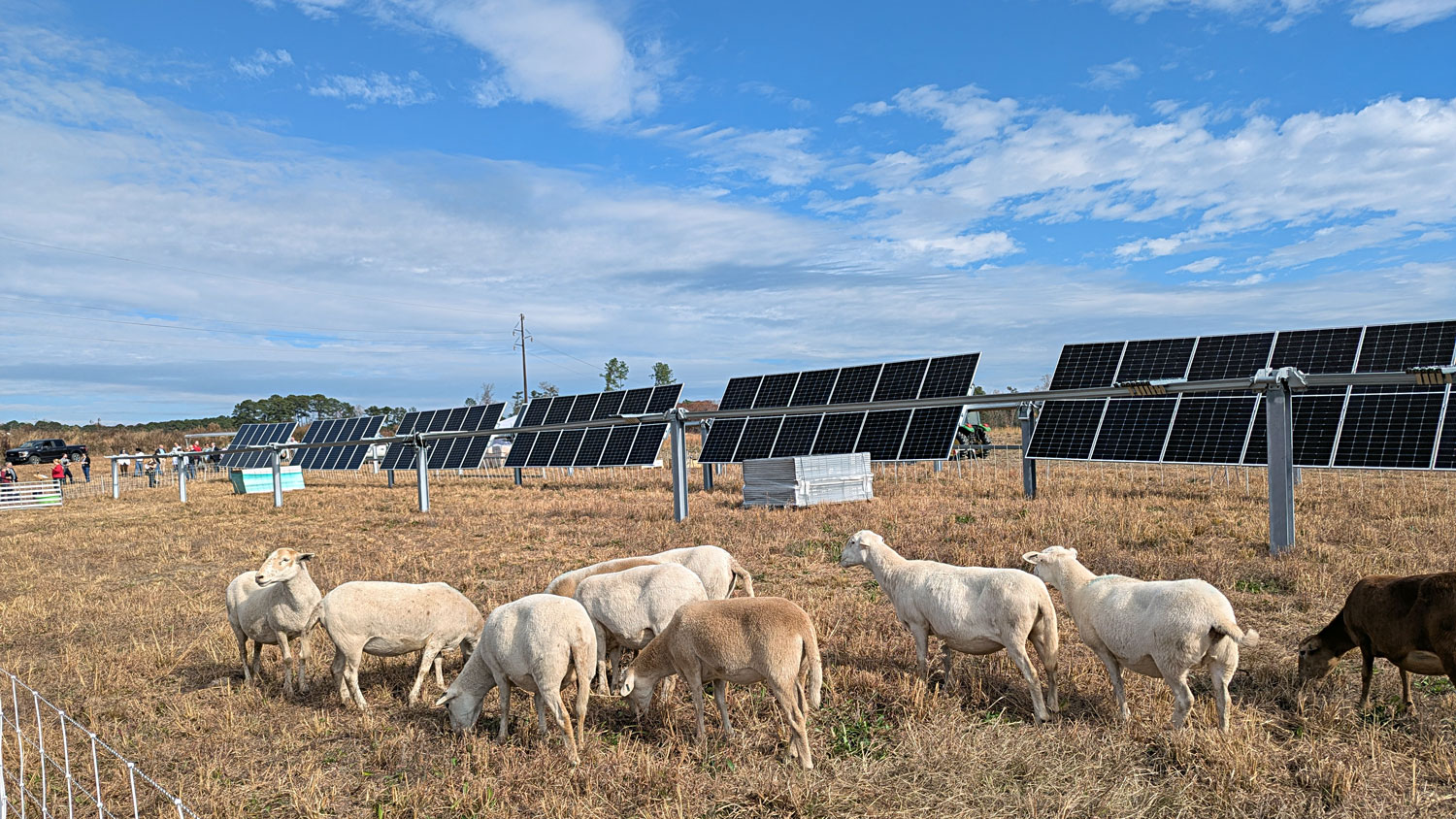Industry Partnership Aims to Tackle Hog Farm Wastewater
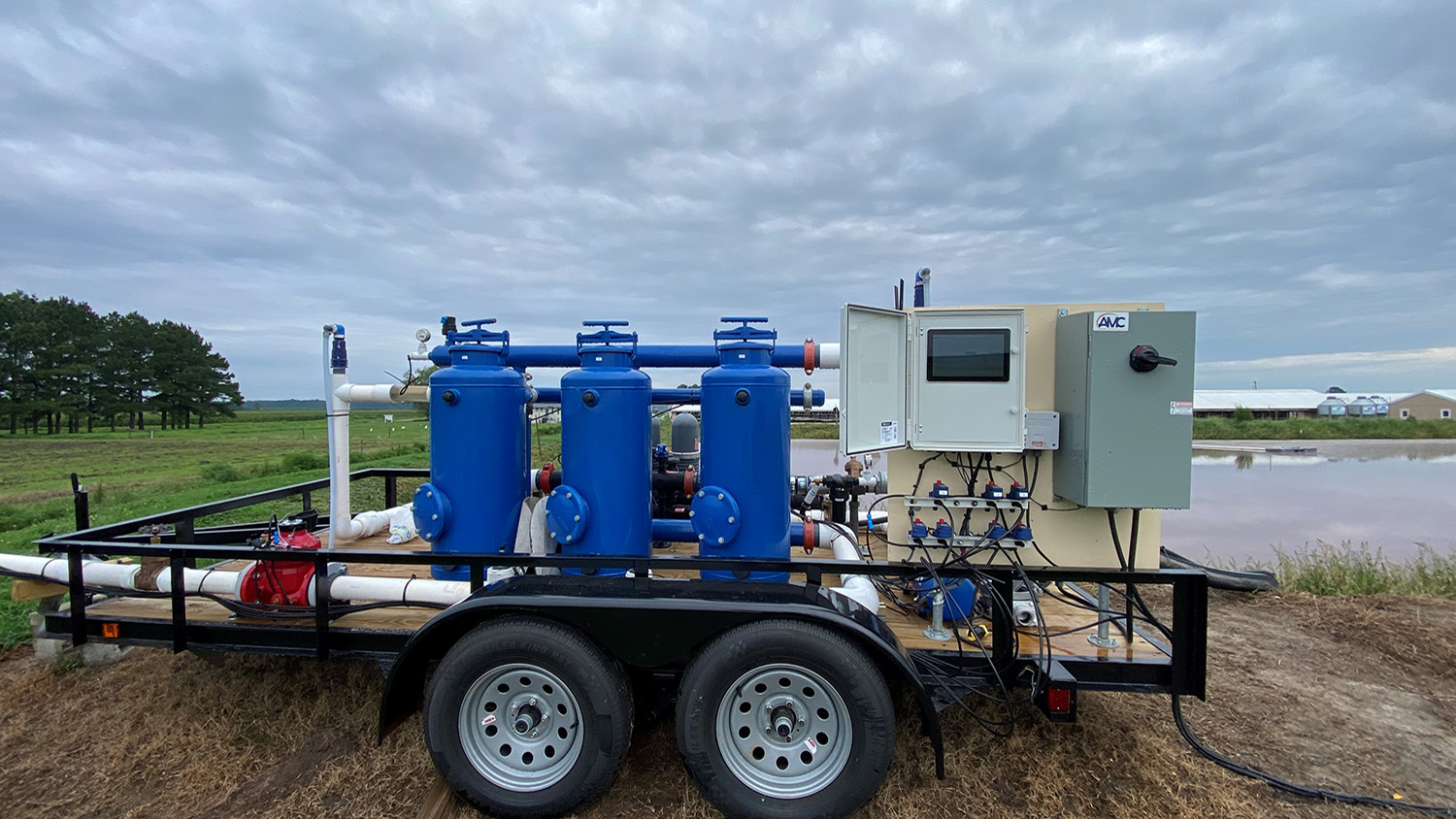
By Lea Hart
International irrigation company Netafim, the precision agriculture business of Orbia, and TriEst Ag Group have partnered with NC State University’s College of Agriculture and Life Sciences to develop a more environmentally friendly solution for managing wastewater from hog farms. The technology could also have long-term benefits for crop farmers.
Netafim’s support for the college includes funding to assist graduate students working in water and air quality, funding for a sponsored research project and funds for the purchase and installation of two drip irrigation systems for use at the university’s Tidewater Research Station, located in Plymouth, N.C. Netafim has also donated a state-of-the-art automatic programmable drip filtration system as part of the project.
Three CALS faculty will lead the charge in this partnership with Netafim: Chad Poole, assistant professor and Extension specialist with the Department of Biological and Agricultural Engineering, Stephanie Kulesza, assistant professor in the Department of Crop and Soil Sciences, and Mahmoud Sharara, associate professor of biological and agricultural engineering.
CALS will be an essential part of the hog farm testing phase for Netafim’s SDI-E (Subsurface Drip Irrigation for Effluent) system. If successful, it could help reduce and/or eliminate leaching from hog farm wastewater application events and greatly reduce odor and climate-warming gases, according to Rob Brown, Netafim’s dealer relationship manager for the Mid-Atlantic region.
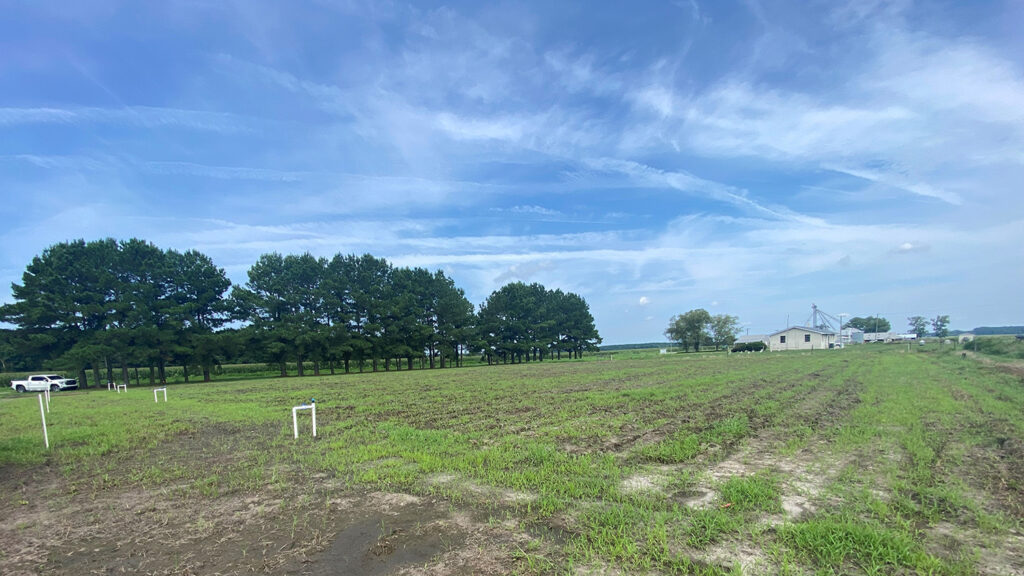
What’s more, the system is designed to take the nutrients found in hog farm effluent and spoon-feed them to farmers’ crops. This technology would reduce farmers’ need for synthetic fertilizers, says Erwin Newell, vice president of business development and irrigation for TriEst Ag Group. The nutrient-rich water would be distributed below the soil surface, which helps eliminate odor in the air.
“We have an interest in being able to evaluate this technology — what will it provide the industry; is it something growers can use efficiently; are there problems associated with it; and are there challenges?” Poole says.
Netafim, and its dealer partner, TriEst Ag, see academia as an essential partner in testing the success of this new system, bringing expertise in research and data gathering, as well as credibility by providing unbiased results.
“NC State was identified because it’s a very robust organization as far as breadth and capabilities to do this research,” says Jim Ed Beach, U.S. commercial lead for sustainable solutions at Netafim. “It’s located in the third-largest hog-producing state, so that’s a key geography for us, and NC State is a wonderful university that puts out great data.”
The system itself took roughly seven years to develop and, while it has been implemented in the dairy and swine industries, it remains in the testing phase in the swine industry, Beach says. Currently, it’s operational in about 35 dairies and two swine operations in the U.S.
The focus for the CALS partnership is testing within the swine industry. Currently, swine wastewater is sprayed onto farm fields. This new application technology may have a potential benefit of reducing both odors and nutrient leaching.
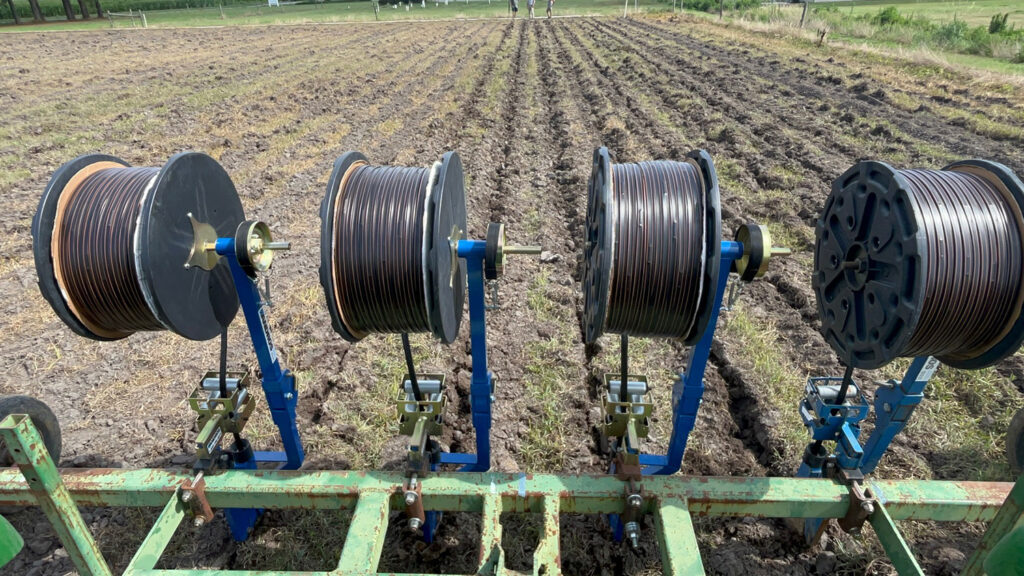
“With our technology, we can protect the groundwater and keep gasses from escaping into the environment,” Brown says.
Kulesza notes the partnership will aid researchers in pursuing this relevant topic for the long-term.
“Industry partners are crucial for everything we do,” she says. “It’s a huge benefit when we’re able to get money to assess technology.”
Funding to support graduate student research is also a key component in training the next generation of researchers to build on these solutions.
“Much of our work is carried out by graduate students and undergraduate students as part of their training,” Sharara says. “Netafim understands that work is valuable and they are willing to invest in students.”
And the graduate students working on this project get the benefit of hands-on experience that enhances their education.
“They’ll be able to work on a real-world project and publish this research when they’re done,” Poole says.
The researchers note that it’s early in the testing process. Part of their job is to evaluate all of the pros and cons as this project moves forward and to provide impartial feedback. It’s about figuring out how all of the intricacies are going to play out, Poole says. But the potential is part of what makes the partnership so compelling.
“This could be a very exciting upgrade to a part of the waste management system that has been virtually unchanged for decades,” Kulesza says.
